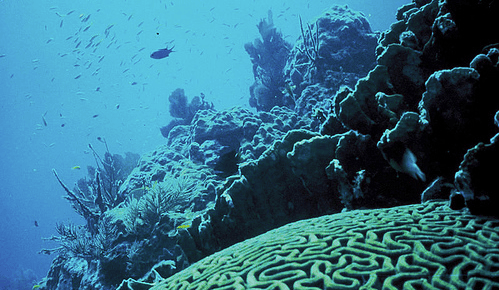
In a new study recently published on Biogeosciences Discussions a team of scientists (among them the CMCC researcher Marcello Vichi from ANS Division) tried to assess how some stressors, such as warming, acidification, deoxygenation and changes in primary productivity by marine phytoplankton, may evolve over the course of the 21st century, while using the most recent simulations performed in the framework of CMIP5 (Coupled Model Intercomparison Project 5) models.
Ocean ecosystems are in fact increasingly stressed by human-induced changes of their physical, chemical and biological environment. Among these changes, the factors mentioned above can be considered as four of the major stressors of open ocean ecosystems. Due to rising atmospheric CO2 in the coming decades, these changes will be amplified.
Results highlighted the effectiveness of extreme mitigation strategies as well as the risks of a business-as-usual scenario.
The abstract of the paper:
Ocean ecosystems are increasingly stressed by human-induced changes of their physical, chemical and biological environment. Among these changes, warming, acidification, deoxygenation and changes in primary productivity by marine phytoplankton can be considered as four of the major stressors of open ocean ecosystems. Due to rising atmospheric CO2 in the coming decades, these changes will be amplified. Here, we use the most recent simulations performed in the framework of the Coupled Model Intercomparison Project 5 to assess how these stressors may evolve over the course of the 21st century. The 10 Earth system models used here project similar trends in ocean warming, acidification, deoxygenation and reduced primary productivity for each of the IPCC’s representative concentration pathways (RCPs) over the 21st century. For the “business-as-usual” scenario RCP8.5, the model-mean changes in the 2090s (compared to the 1990s) for sea surface temperature, sea surface pH, global O2 content and integrated primary productivity amount to +2.73 (±0.72) °C, −0.33 (±0.003) pH unit, −3.45 (±0.44)% and −8.6 (±7.9)%, respectively. For the high mitigation scenario RCP2.6, corresponding changes are +0.71 (±0.45) °C, −0.07 (±0.001) pH unit, −1.81 (±0.31)% and −2.0 (±4.1)%, respectively, illustrating the effectiveness of extreme mitigation strategies. Although these stressors operate globally, they display distinct regional patterns and thus do not change coincidentally. Large decreases in O2 and in pH are simulated in global ocean intermediate and mode waters, whereas large reductions in primary production are simulated in the tropics and in the North Atlantic. Although temperature and pH projections are robust across models, the same does not hold for projections of subsurface O2 concentrations in the tropics and global and regional changes in net primary productivity. These high uncertainties in projections of primary productivity and subsurface oxygen prompt us to continue inter-model comparisons to understand these model differences, while calling for caution when using the CMIP5 models to force regional impact models.
Read the integral version of the paper:
Bopp L., Resplandy L., Orr J. C. , Doney S. C. , Dunne J., Gehlen M., Halloran P., Heinze C., Ilyina T., Séférian R., Tjiputra J. , Vichi M.
Multiple stressors of ocean ecosystems in the 21st century: projections with CMIP5 models
Biogeosciences, 10, 6225-6245, 2013
DOI: 10.5194/bg-10-6225-2013


